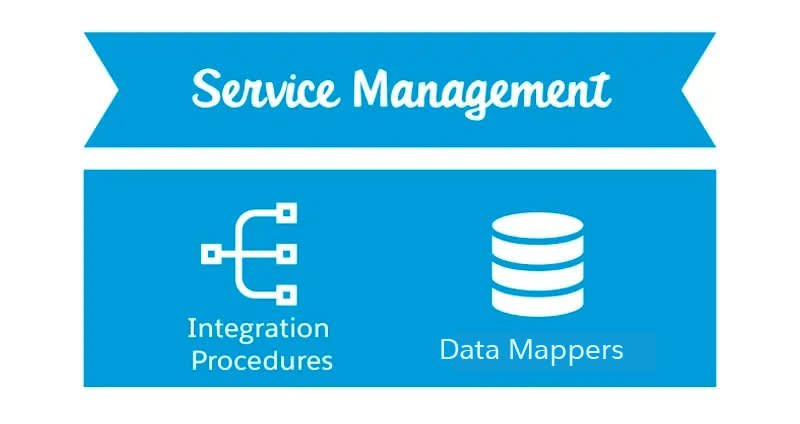Use the Service Management Layer
Learning Objectives
After completing this unit, you’ll be able to:
- Summarize the Service Management layer.
- List each component of the Service Management layer and its capabilities.
Control Data with the Service Management Layer
The Service Management layer of OmniStudio includes data services that read, write, transform, calculate, and track data within and outside of Salesforce.

- OmniStudio Data Mappers: Configurable services for retrieving, transforming, and updating data
- OmniStudio Integration Procedures: Declarative, server-side processes that execute multiple actions in a single server call
With these fantastic features of the Service Management layer, agents take command of their customer data and drive meaningful interactions. Let’s get a closer look at each component.
Service Management Components and Capabilities
Data Mappers
A Data Mapper is a mapping tool that enables you to read, transform, and write Salesforce data. There are four types of Data Mapper: Turbo Extract, Extract, Load, and Transform. Here are some guidelines for determining which Data Mapper to use.
| Objective |
Data Mapper Type |
|---|---|
|
Get data from a single Salesforce object |
Data Mapper Turbo Extract |
|
Get data from one or more Salesforce objects |
Data Mapper Extract |
|
Save data to one or more Salesforce objects |
Data Mapper Load |
|
Manipulate any data that comes from inside or outside Salesforce |
Data Mapper Transform |
Integration Procedures
Integration Procedures are a way to retrieve, save, and manipulate data behind the scenes. An Integration Procedure is also recommended when you need fast processing of complex data from multiple sources. Why? Because:
- Server-side processing enables faster performance, since, in most cases, the server is faster than the client at processing data.
- Combining multiple actions in a single server call prevents round trips to the server.
- Minimizing client/server calls is beneficial, as more round trips mean slower performance.
These components of the Service Management layer speed up development time and help users to more cost-effectively maintain updates over time. For example, let’s say that a user wants to expose a new field that's providing a new piece of information in a user interface (UI) or process. All they need to do is add it into the Data Mapper and Integration Procedure to expose it, then add the field in an OmniStudio FlexCard to show it to a customer. That’s good stuff!
With its three layers and high functionality, OmniStudio provides exactly the kind of digital engagement consumers and companies seek—personal, reliable, and efficient.